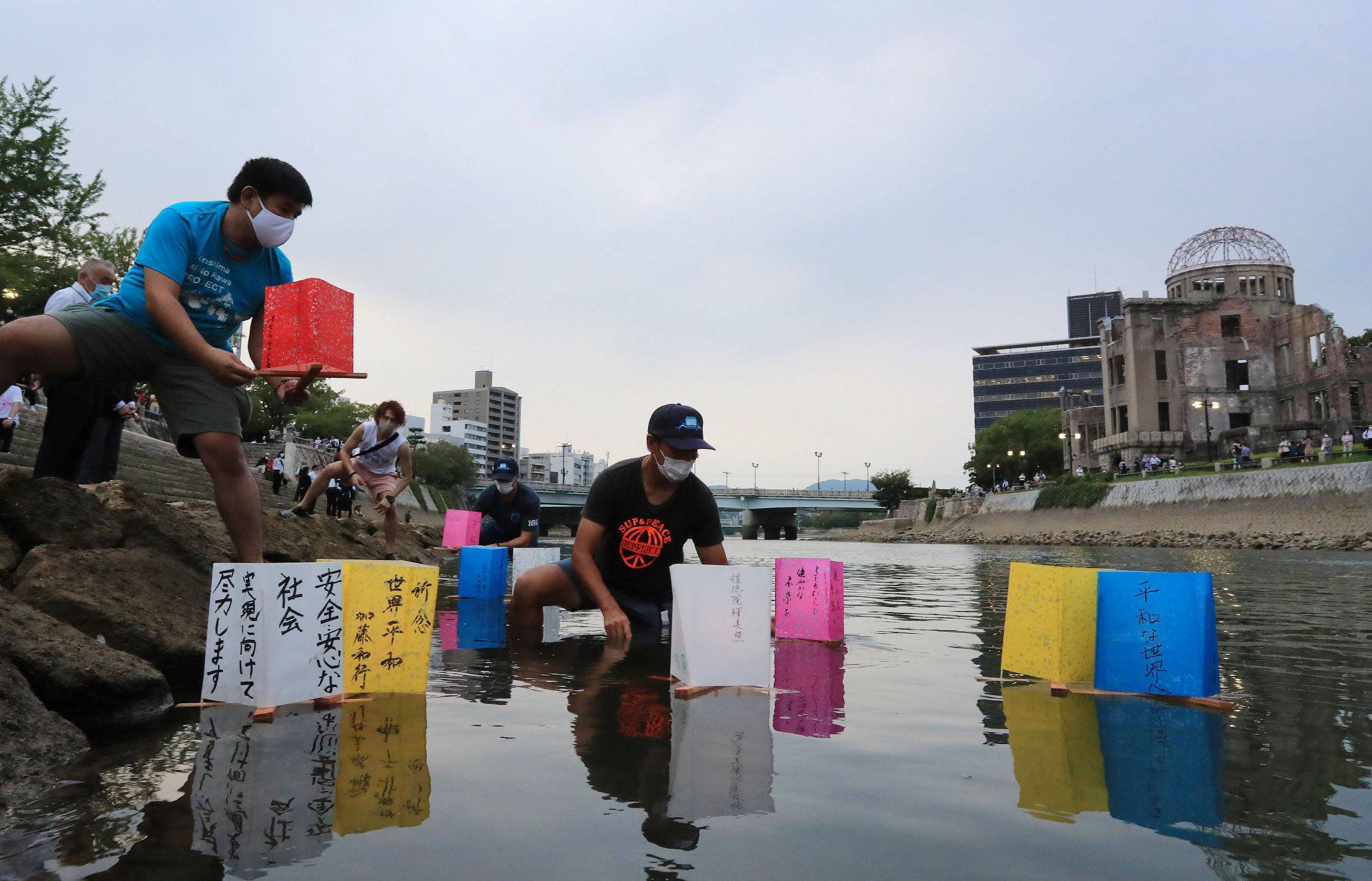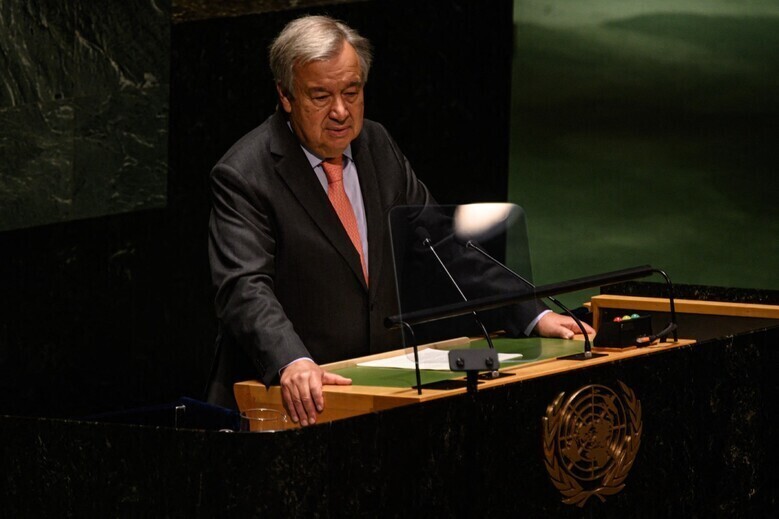Not a Big Deal
THE TRIBUNE
APLN member Shyam Saran views the P5 statement from a different perspective, questioning its credibility and addressing why it is difficult to feel reassured by it. The original post is available on the Tribune website here.
On January 3, the five permanent members (P5) of the UN Security Council — China, France, Russia, the UK and the US — issued a joint statement of their leaders declaring their commitment to ‘Preventing Nuclear War and Avoiding Arms Races’. The statement is noteworthy as it is issued on behalf of the leaders of the P5, who are also the original five nuclear weapon states. It has greater solemnity if not credibility. It was clearly aimed at the Tenth Review Conference of the Treaty on Non-Proliferation of Nuclear Weapons (NPT), scheduled to be convened from January 4, but was postponed due to Covid surge. The non-nuclear weapon states party to the NPT are dissatisfied at the lack of progress in achieving nuclear disarmament to which the
nuclear weapon states had committed themselves in Article VI of the treaty. The statement, the P5 would have hoped to deflect the negative sentiment against them. The P5 sought to convey that despite the political tensions prevailing in their relations, they were adopting measures to reduce the risk of the use of nuclear weapons and would continue to work together to prevent a nuclear arms race. They acknowledged that ‘a nuclear war cannot be won and must never be fought’. This echoes a dictum that emerged from the Reagan-Gorbachev summit of 1985, when the leaders declared that ‘a nuclear war cannot be won and must never be fought’.
The P5 have excluded the four other nations which have nuclear weapons — India, Israel, Pakistan and North Korea — but are not acknowledged as such under NPT.
If this is what the P5 truly believe, it is difficult to understand their rejection (except China) of the principle of the non-use of nuclear weapons which has been on the UN agenda for several decades. The P5 have been consistent in their rejection, even condemnation, of the Treaty on the Prohibition of Nuclear Weapons (TPNW) which was adopted by a large majority of the members of the UN (122) on July 7, 2017, and came into force on January 22, 2021. The TPNW prohibits the development, testing, production, acquisition, possession, stockpiling and use or the threat of use of nuclear weapons which would have been the logical outcome of the P5 delivering on their commitment to achieve nuclear disarmament. India has also rejected the treaty.
The P5 statement emphasises ‘the importance of preserving and complying with our bilateral and multilateral non-proliferation, disarmament, and arms control agreements and commitments’. The reality is that over the past decade, we have seen a whole series of arms control agreements being abandoned. The US withdrew from the Anti-Ballistic Missile (ABM) treaty in 2002, the Intermediate-Range Nuclear Forces (INF) treaty in 2019 and the Open Skies agreement in 2020. The only bilateral US-Russia arms control agreement still in force is the Strategic Arms Limitation Treaty which was extended in 2021 and will expire in 2026. The Comprehensive Test Ban Treaty
(CTBT) has not yet been ratified and no new arms control agreements are in the offing. Therefore, the statement is not credible.
An important commitment on behalf of the P5 is the reaffirmation that ‘none of our nuclear weapons are targeted at each other or any other state’. But with current technology, targeting can be done almost instantly. What is more important is keeping weapons de-mated from delivery vehicles. The deployment of hypersonic glide weapons greatly enhances the risk of pre-emptive strikes, both of nuclear and non-nuclear weapons.
In the light of this record, it is difficult to feel reassured by the P5 statement.
A Chinese official suggested that this statement was first of its kind from the P5. That is not true. The P5 have issued statements on nuclear issues in the past at the official level. There was a similar statement at the foreign ministers’ level on the 50th anniversary of the NPT on March 10, 2020. A P5 Process has been in place at Geneva since 2008, associated with the Conference on Disarmament (COD), but its proceedings are in the nature of informal consultations. The P5 may have major differences among them but usually collude when their common interests are under threat, such as their privileged status as permanent members of the UNSC or as the only states that are ‘legitimate’, because only they are acknowledged as nuclear weapon states under the NPT.
It should be apparent that the assurances contained in the statement do not have credibility because they have excluded the four other states which have nuclear weapons, but are not acknowledged as such under the NPT. These are India, Israel, Pakistan and North Korea. Their nuclear arsenals may be small, but capable of triggering a catastrophic war. Any credible set of assurances must include their commitments. Their inclusion in any nuclear non-proliferation or nuclear disarmament process will not be possible under the NPT, since they are not members. Even if the P5 were able to reach some significant nuclear arms control or disarmament agreements among themselves, these would be incomplete without the participation of
the four non-NPT nuclear weapon states. It makes more sense to initiate a multilateral negotiating process at COD at Geneva, which is sole multilateral body under the UN mandated to negotiate arms control and agreements. Issues of nuclear war cannot only be the business of those who possess such weapons.
Much of the discourse on nuclear weapons and doctrines has evolved in the East-West binary dominated by the two erstwhile superpowers, the US and the then Soviet Union during the Cold War. The world is different today. Not only are there several more nuclear actors but their doctrines of use of nuclear weapons are also different. The dynamics among nine nuclear weapon states will be different from the old binary context. The US and Russia are today unable to reach significant nuclear weapons agreements because each is concerned about the rise of China and its rapid build-up of its nuclear and delivery assets. But China is not ready to enter into trilateral negotiations. India has to worry about both Pakistan and China. It is only in a multilateral negotiating process that these asymmetrical realities can be addressed, and hopefully, reconciled. India has been a constant champion of this at COD and should continue to mobilise a larger constituency in its support.


![[CHN] Would a Nuclear Sharing Agreement With the United States Make Japan More Secure?](https://cms.apln.network/wp-content/uploads/2022/07/截屏2022-07-12-11.22.45.png)

